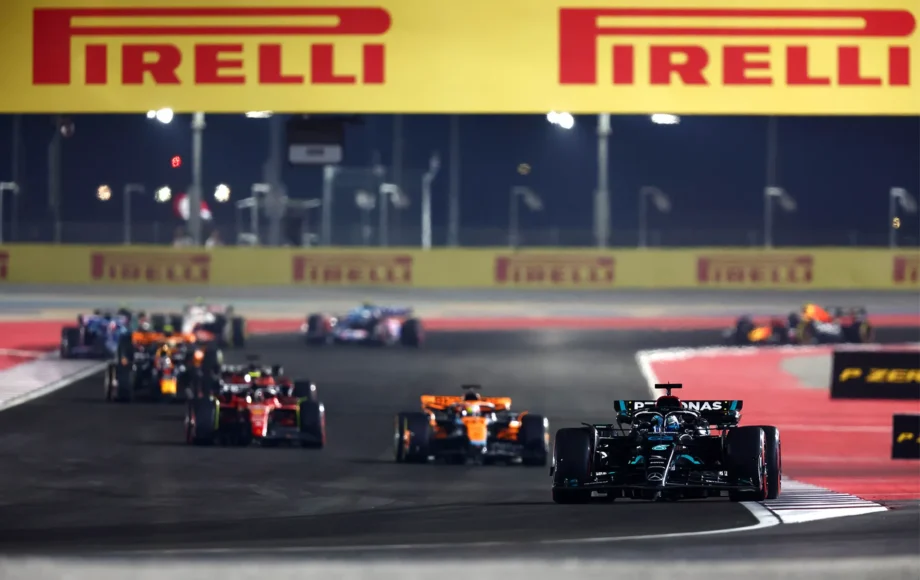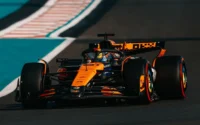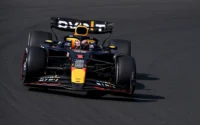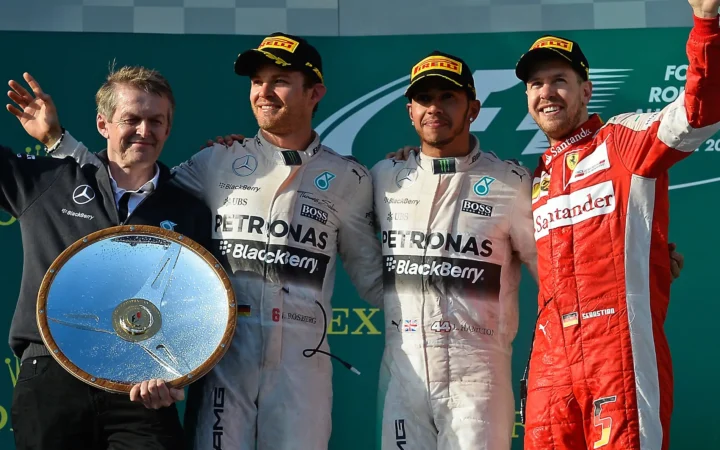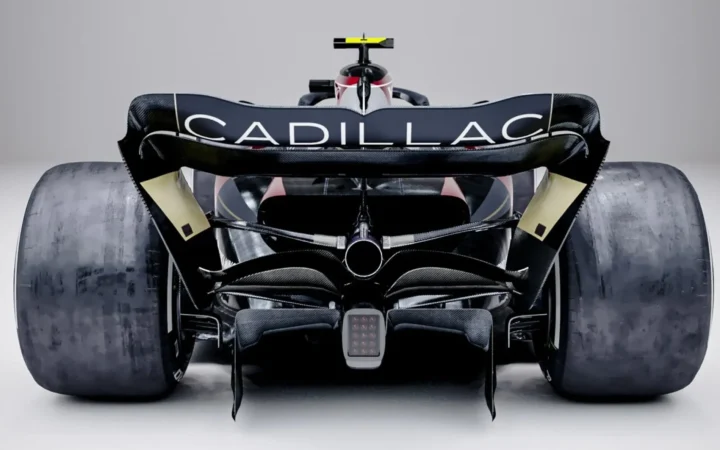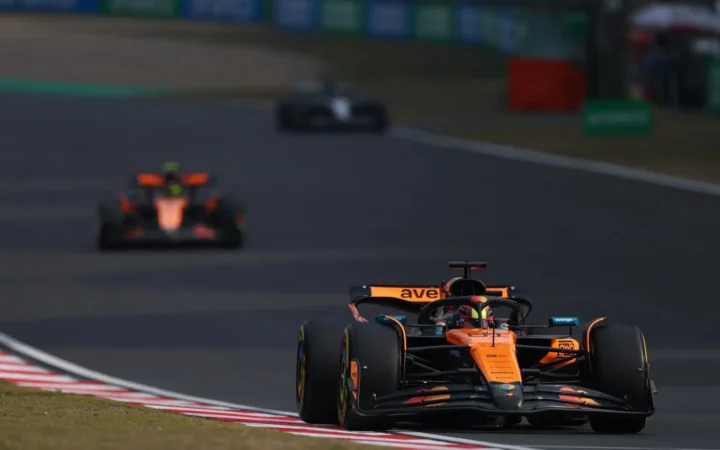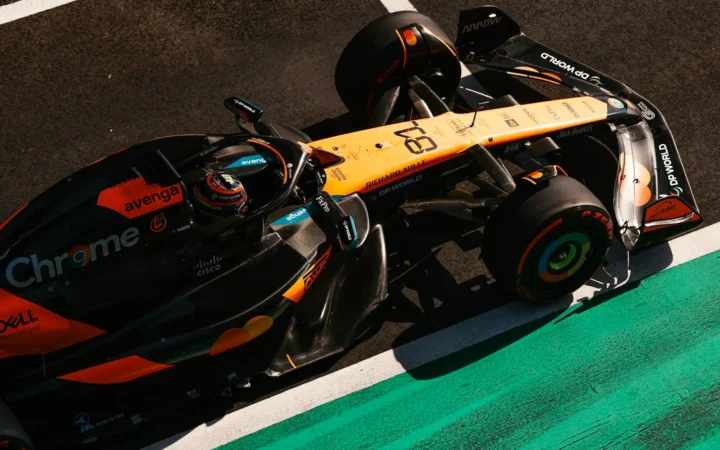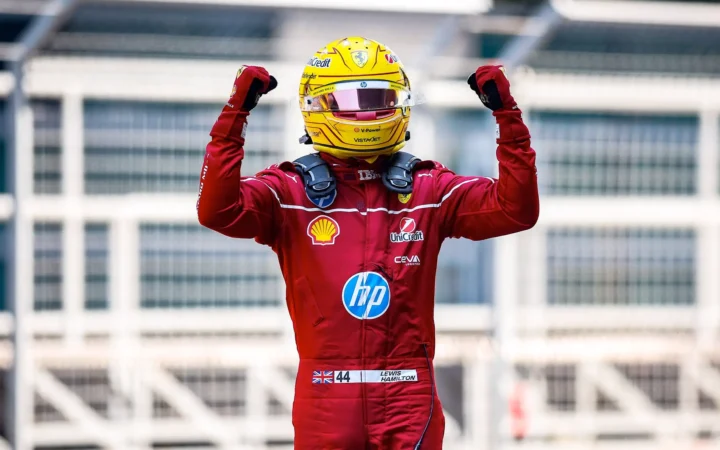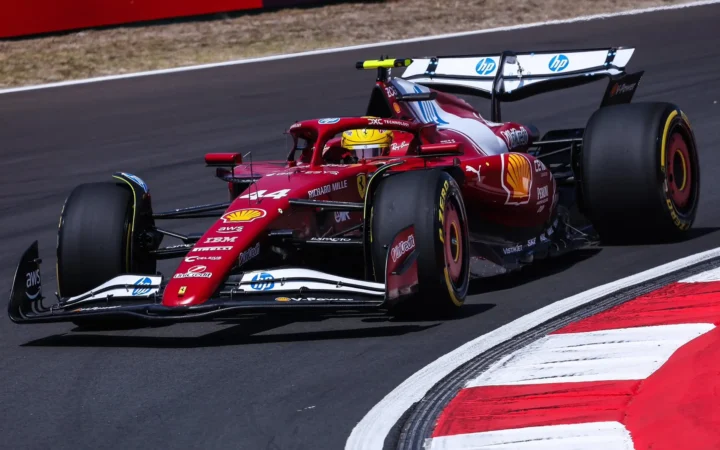The world of Formula 1 racing is a vibrant and ever-evolving spectacle. One of the key components behind the success of F1, aside from the thrilling on-track action, is the variety of circuits that the championship visits throughout the season.
From historic tracks like Silverstone in the UK and Monza in Italy to the newer, state-of-the-art venues like Yas Marina in Abu Dhabi, there’s no doubt that each circuit brings its unique flavour to the championship. However, the presence of a Grand Prix on the F1 calendar isn’t guaranteed indefinitely. The inclusion of each race depends on a contract between the race promoters and Formula 1 Management. But how do these contracts work, and how long can we expect each Grand Prix to stay on the calendar?
The basics of an F1 Grand Prix contract
A contract is at the heart of each race’s inclusion in the F1 calendar. Typically, these agreements are signed for a fixed number of years. Contracts usually range from 3 to 5 years, though there are exceptions, with some deals lasting up to 10 years or more.
The specifics of the contract will cover various aspects, including:
- Financial Agreements: This encompasses the hosting fees that the promoter pays to Formula 1 Management. These fees range significantly, often running into the tens of millions of dollars annually.
- Logistical Support: Agreements on how the infrastructure will be set up, the role of local authorities, and other organisational details.
- Promotion and Marketing: Details about how the race will be promoted locally and internationally.
- Renewal and Termination Clauses: Stipulations about how and when the contract can be renewed or terminated.
Current F1 Grand Prix contract status
In this guide, we’ll explore which venues will remain on the calendar for the longest amount of time? Which tracks need to secure new long-term deals to remain on the schedule? And how long each contract for every current venue lasts.
Chinese Grand Prix – Shanghai International Circuit: 2025
After marking a significant milestone with F1’s 1000th World Championship event in 2019, the Chinese Grand Prix at the Shanghai International Circuit experienced an unexpected hiatus due to the COVID-19 pandemic, causing its removal from the calendar for 2020, 2021, and 2022.
Formula 1 remains keen on reaffirming its ties with this critical market. In November 2021, a three-year contract extension was inked, securing the championship’s return to Shanghai and ensuring races in the region until 2025. This move emphasises China’s significant role in the Formula 1 landscape.
Emilia Romagna Grand Prix – Imola: 2025
In March 2022, Formula 1 affirmed the continuation of the Emilia Romagna Grand Prix on its calendar, guaranteeing its spot until at least 2025. Imola, known for the iconic Autodromo Enzo e Dino Ferrari, returned to the F1 schedule in 2020 as a distinct two-day event, stepping in for circuits that couldn’t host races amid the COVID-19 pandemic’s peak. With Italy easing its restrictions, the 2022 Emilia Romagna Grand Prix marked a significant moment, welcoming fans to Imola for the first time since its last race in 2006 as the San Marino Grand Prix.
However, the 2023 event faced an unexpected challenge when it was cancelled due to flooding. There’s speculation that this might lead to a one-year extension to Imola’s contract, but there has been no official confirmation to date.
Mexican Grand Prix – Autodromo Hermanos Rodriguez: 2025
In 2019, the future of the Mexican Grand Prix hung in the balance due to financial concerns. However, a timely agreement in August of that year ensured the race’s continuation for an additional three seasons. A significant contribution from the local government led to a rebranding in 2021, renaming the event as the Mexico City Grand Prix.
While the global pandemic led to the race’s omission in 2020, the Autodromo Hermanos Rodriguez circuit notably did not extend its contract to compensate for the missed event, unlike some other circuits. Nevertheless, leading up to the 2022 race, the last under the previous contract, Formula 1 reaffirmed its commitment to the location by announcing that the Mexico City Grand Prix will grace the calendar through at least 2025.
Las Vegas Grand Prix – Las Vegas: 2025
In a highly anticipated move, Las Vegas is set to feature on the F1 calendar from 2023, with the inaugural Las Vegas Grand Prix slated for November. The race, expected to be a significant attraction, will be held on a brand-new street circuit that promises an exhilarating drive along The Strip and other notable locations. Additionally, adding a unique twist, this race will light up Saturday nights, targeting prime-time viewership.
The initial agreement ensures Las Vegas’ presence in F1 for three seasons through 2025. However, Formula 1’s dedication to the region is evident from its land acquisition near the renowned Las Vegas Strip for the pit complex. It plans to make the Nevada race a “flagship event.” Given the championship’s long-standing desire to return to Las Vegas and the potential for this race to become a marquee event, there are already discussions to extend the contract to a decade, contingent on the event meeting its lofty expectations.
Dutch Grand Prix – Zandvoort: 2025
The return of the Dutch Grand Prix to the F1 calendar has been a widely celebrated move. After a hiatus of 35 years, the reentry of the Zandvoort circuit was officially announced in May 2019, culminating in its grand re-inauguration in August 2021.
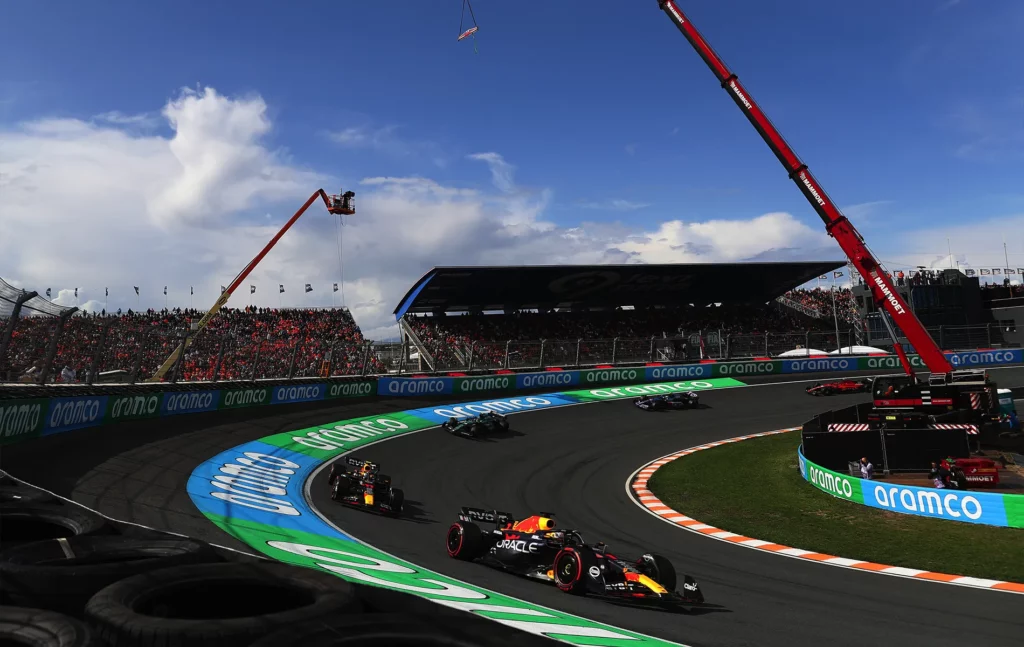
The rise of Max Verstappen as a dominant force in F1, marked by his championship victories in 2021 and 2022 and his long-term commitment to Red Bull Racing through 2028, only amplified the event’s appeal. Initially, the Circuit Zandvoort secured its place in the F1 schedule until 2023, with a provision to further the deal by two years. Riding on the momentum of a staggering attendance of 305,000 enthusiasts for the 2022 race, the contract was extended in December 2022, ensuring that the Dutch Grand Prix will remain a fixture until at least 2025.
Spanish Grand Prix – Circuit de Barcelona-Catalunya: 2025
After a succession of single-year contracts, the Circuit de Barcelona-Catalunya inked an extended agreement towards the end of 2021, ensuring its place as the host of the Spanish Grand Prix until at least 2026. This long-term commitment followed years of challenges marked by outdated facilities and financial constraints. However, the pandemic provided a unique backdrop that facilitated both parties reaching a mutual agreement.
In 2022, the Spanish Grand Prix witnessed its most significant race day crowd in nearly a decade and a half. The impressive turnout was notably bolstered by homegrown talents Carlos Sainz and Fernando Alonso on the grid. As part of the extended contract terms, it was also decided that the racing complex would undergo necessary renovations, signalling a new era for the iconic Spanish racing event.
Despite Madrid’s recent addition to the Formula 1 calendar from 2026, the Circuit de Barcelona-Catalunya remains optimistic about its future in the sport. Time will tell if the agreement extends past 2026. (See: Spanish Grand Prix – Circuito IFEMA Madrid: 2035)
United States Grand Prix – Circuit of the Americas: 2026
The 2021 season witnessed the United States Grand Prix at the Circuit of The Americas (COTA) achieve the highest race attendance that year. Riding the wave of Formula 1’s surging popularity in the US, largely amplified by the success of Netflix’s series “Drive to Survive”, it was a strategic move for the race organizers to cement a deal in early 2022. This agreement ensured that COTA would continue to host the United States Grand Prix until at least 2026.
However, as Formula 1 diversifies its presence in the US with new additions in Miami and Las Vegas, it remains to be seen whether the Texas track can maintain its stellar popularity in the upcoming years.
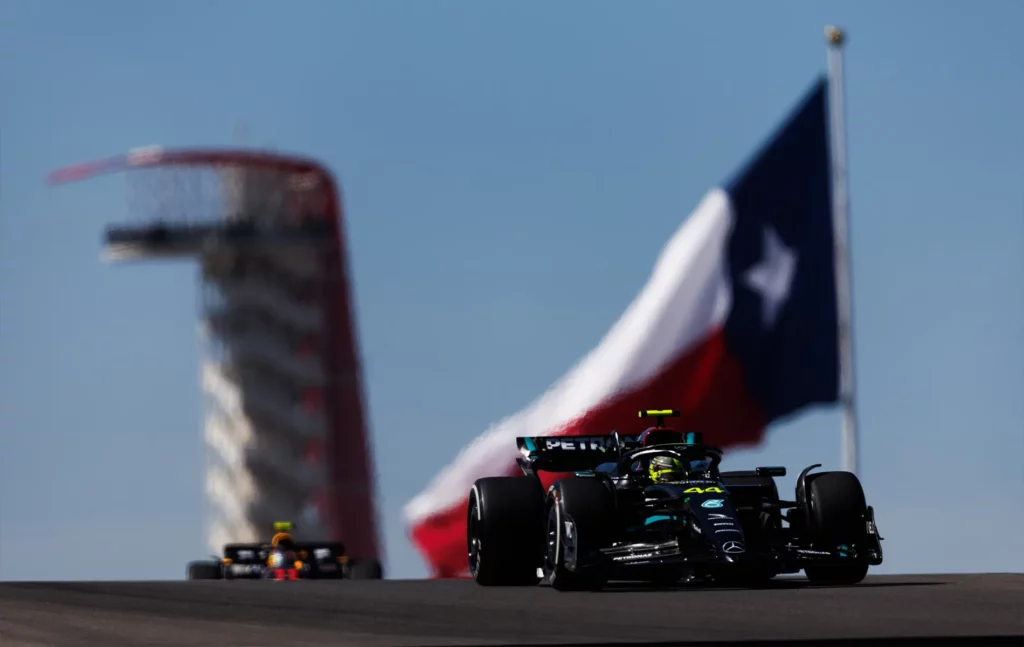
Azerbaijan Grand Prix – Baku: 2026
The Baku City Circuit, rapidly gaining fame for its exciting races, initially extended its agreement to host the Azerbaijan Grand Prix until 2023 in a deal struck in February 2019. However, the unforeseen challenges of the COVID-19 pandemic meant the circuit couldn’t host a race in 2020. As a result, an extra year was added to the contract in May 2021. To further solidify its place on the F1 calendar, during the 2023 Azerbaijan Grand Prix weekend, it was announced that Formula 1 and Baku City Circuit had reached a new agreement, extending their partnership for three more seasons. This ensures the thrilling street circuit in Baku will remain a staple in the Formula 1 season until at least 2026.
Singapore Grand Prix – Marina Bay Street Circuit: 2028
In January 2022, the Singapore Grand Prix solidified its presence on the F1 calendar with a new deal that extends its run until 2028. This marked the first contract extension for F1’s pioneering night race since 2017.
Following a hiatus due to the COVID-19 pandemic, which saw the race removed from the calendar in 2020 and 2021, the iconic Marina Bay street circuit made a much-anticipated return in October 2022. This nocturnal event has always been a highlight for fans and F1 drivers alike, and its secured spot until 2028 promises many more electrifying races under the city lights.
Japanese Grand Prix – Suzuka: 2029
The Suzuka circuit, a longstanding fan favourite in the world of Formula 1, experienced an unforeseen hiatus due to the widespread effects of the coronavirus pandemic. As a result, the revered Japanese Grand Prix, which has been an integral part of the F1 calendar since its inauguration in 1987, saw an interruption, with the last race taking place in 2019. However, in a welcome turn of events for fans and stakeholders alike, the Grand Prix made a triumphant return in 2022.
This resurgence is not just a temporary affair. In April 2021, amidst uncertainties, a new agreement was reached, which serves as a testament to the mutual commitment between the race organizers and Formula 1. This freshly minted contract assures the continuity of the Japanese Grand Prix at Suzuka on the F1 calendar for an additional span until 2024.
It’s worth noting that the Suzuka circuit, despite its long association with F1, had previously faced a brief interval in its hosting duties, taking a short recess in 2007 and 2008. But with the most recent contract extension adding more seasons to its tenure, it reinforces the importance of the Japanese market to F1 and the circuit’s unique challenge cherished by Formula One drivers and F1 teams alike.
On February 2, 2024, Formula 1 announced a five-year extension beyond 2024, where the iconic Japanese Grand Prix will remain at Suzuka until 2029 inclusive. Considering the blend of the circuit’s historical significance, the value of the Japanese market to the world of motorsports, and the intricacies of the Suzuka track, the future of the Japanese Grand Prix seems well-anchored, at least for the foreseeable future.
Sao Paulo Grand Prix – Autodromo José Carlos Pace / Interlagos Circuit: 2030
The Interlagos circuit in Sao Paulo secured its position as a Formula 1 host until 2030, following a five-year agreement finalised in December 2020. As a part of this deal, the event, historically known as the Brazilian Grand Prix, was rebranded as the São Paulo Grand Prix, a change mirroring the financial contributions made by the local government. While there were longstanding speculations about F1 shifting its venue to a new circuit in Rio de Janeiro, those plans have since been postponed, ensuring Interlagos remains at the heart of F1 racing in Brazil.
Saudi Arabian Grand Prix – Jeddah Cornice Circuit: 2030
The specifics of the contract between Saudi Arabia and Formula 1 remain under wraps, but it’s believed the deal spans “a decade if not longer.” Given the inaugural Saudi Arabian Grand Prix took place in 2021, this suggests the race will feature on the F1 calendar until at least 2030.
While the initial races are set at the Jeddah Corniche Circuit, plans indicate a transition to a newly constructed circuit in Qaddiya after 2025. This long-term commitment showcases Saudi Arabia’s ambition to be a significant player in Formula 1.
Abu Dhabi Grand Prix – Yas Marina Circuit: 2030
Ahead of the gripping 2021 title duel between Max Verstappen and Lewis Hamilton, the Abu Dhabi Grand Prix’s contract with Yas Marina Circuit was extended, ensuring its presence on the F1 calendar until at least 2030.
Alongside this commitment, Yas Marina retains the contractual privilege to be the season’s concluding race. This decision followed the memorable finale in 2021, where Verstappen clinched his inaugural F1 world title. The circuit is expected to continue to serve as the season’s dramatic curtain-closer in subsequent years.
Austrian Grand Prix – Red Bull Ring: 2030
In March 2023, Formula 1 and the Austrian Grand Prix promoter, Projekt Spielberg, unveiled a four-year contract extension, ensuring the race’s spot on the calendar through 2027. This agreement was further extended by three more years just four months later, solidifying the Austrian Grand Prix’s presence until at least 2030
The event has witnessed a surge in attendance, mainly due to the meteoric rise of Max Verstappen. His dedicated Dutch fanbase contributed to a record-breaking attendance of 303,000 in 2022. While Dr Helmut Marko, a Red Bull advisor, had hinted at a multi-year deal back in 2020, it wasn’t until the 2023 event that a formal announcement confirmed the Red Bull Ring would host F1 races up to 2030, highlighting its significance to both the sport and Red Bull.
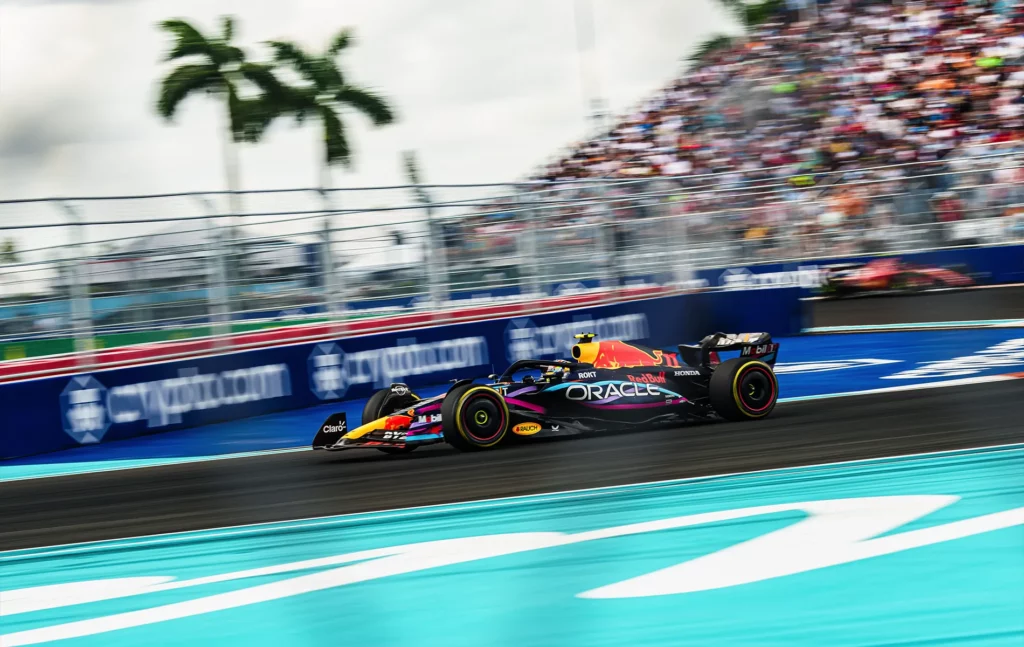
Belgian Grand Prix – Spa-Francorchamps: 2031
Throughout 2022, the iconic Spa Francorchamps circuit, a fixture since F1’s inaugural season, was under media scrutiny concerning its continued place on the F1 calendar.
The Belgian Grand Prix, after a 2020 season that took place behind closed doors without local government funding, had extended its contract for an additional year in June 2020. However, 2021 brought challenges when, due to unfavourable weather conditions, no race took place, casting a shadow on the event’s future.
Keen to solidify its place in the F1 line-up after the 2021 setback, the Spa track underwent several modifications. The efforts culminated in announcing a one-year contract extension on the day of the 2022 race.
Although there was no formal declaration of a new agreement for 2024, the Belgian Grand Prix still made its way onto the F1 calendar, revealed in July 2023. Subsequently, in October 2023, another one-year agreement was finalised. This latest agreement, marking the fourth in three years, ensured Spa’s presence in the F1 calendar until 2025.
On 8 January 2025, F1 announced a multi-year extension with the Belgian Grand Prix, which will see the sport race at the iconic Circuit de Spa-Francorchamps in an unusual four of the next six seasons. The extension includes Grands Prix in the 2026, 2027, 2029, and 2031 seasons. F1’s organisers have yet to confirm which track will rotate with Belgium by hosting in 2028 and 2030, but the move is designed to provide the flexibility to satisfy the significant demand from circuits to join the 24-race calendar.
Italian Grand Prix – Monza: 2031
With its rich racing heritage, Monza officially secured its rights to host the Italian Grand Prix through to 2031, following a new agreement signed on 27 November 2024.
Monza’s Autodromo Nazionale di Monza has been a cornerstone in the F1 calendar. Since 1950, the Italian Grand Prix has been raced there every season, save for one. Emphasising its commitment to the sport, the Monza circuit made considerable investments in infrastructure upgrades, including track resurfacing and an underpass, to improve safety during 2023 and 2024 and is poised for additional enhancements to the hospitality area in the upcoming years. Furthermore, this race holds significant importance for Ferrari and the history of Formula One, cementing its place on the calendar.
Monaco Grand Prix – Monte Carlo: 2031
In early November 2024, Monaco reaffirmed its position on the Formula 1 calendar by signing a new contract, ensuring the iconic Circuit de Monaco will continue to host races until at least the 2031 season.
The continuation of the prestigious race had been a subject of speculation, but with the latest agreement, fans can anticipate a more exhilarating qualifying session in the principality despite races being mostly a procession. Notably, this contract came with the caveat of a date change to the first weekend of June (from 2026) to avoid future clashes with the Indianapolis 500—a change from the original end-of-May date where it has historically overlapped with Indianapolis. The race around the streets of Monte Carlo has been part of the first world championship season in 1950 and has been present since, with the exception of 2020 during the global pandemic.
Miami Grand Prix – Miami International Autodrome: 2031
The Miami Grand Prix debuted in May 2022, attracting an impressive crowd of over 200,000 throughout the weekend around the Hard Rock Stadium. Although there were initial concerns about the event’s potential success and the circuit’s quality, Formula 1 confidently inked a 10-year contract in April 2021. This ensures the Miami Grand Prix will be a fixture on the F1 calendar until at least 2031.
Canadian Grand Prix – Circuit Gilles Villeneuve: 2031
The Circuit Gilles Villeneuve in Montreal ensured its place in Formula 1 until at least 2031. Initially, in March 2017, a deal was secured for the Canadian Grand Prix to be held at the venue until 2029. However, due to the COVID-19 pandemic preventing the race in 2020 and 2021, an additional two years were appended to the contract in April 2021. This means fans can anticipate the iconic semi-street circuit as fixture on the F1 calendar for the coming decade.
Qatar Grand Prix – Losail: 2032
In September 2021, Qatar secured its place on the F1 calendar with a ten-year deal starting from 2021. Though the Qatar Grand Prix debuted at the Lusail International Circuit in 2021 as a replacement for the cancelled Australian GP, it took a hiatus in 2022 due to the country’s hosting of the FIFA World Cup. While the race is set to return to Losail in 2023, there’s speculation that future editions might transition to a new purpose-built circuit currently under construction.
Hungarian Grand Prix – Hungaroring: 2032
The Hungaroring, which has hosted the Hungarian Grand Prix since 1986, initially secured a deal in 2016 to continue until 2026, marking the venue’s 40th anniversary on the F1 calendar. However, during 2020 negotiations, the contract was extended by an additional year to 2027.
In July 2023, a significant five-year extension was announced, ensuring the Grand Prix’s presence at the Hungaroring until at least 2032. As part of this latest agreement, the circuit will undergo significant renovations, including a new pit building and a revamped main grandstand.
British Grand Prix – Silverstone: 2034
In 2017, the iconic British Grand Prix at Silverstone faced an uncertain future. The circuit’s management decided to activate its break clause, stemming from financial struggles attributed to an ‘escalator clause’ present in the contract. This clause made profitability challenging for Silverstone. Fortunately, ahead of the 2019 British Grand Prix, F1 and Silverstone reached a renegotiated agreement, ensuring that the much-celebrated race would continue at the venue until 2024.
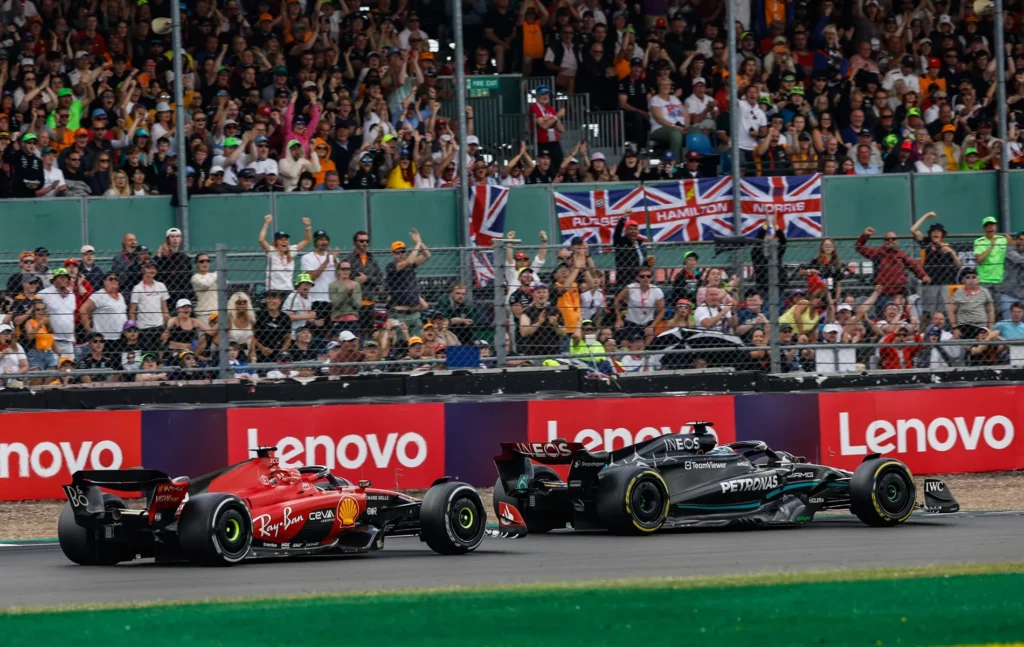
Reflecting on the journey and looking to the future, Silverstone’s Managing Director, Stuart Pringle, expressed a renewed optimism and commitment. He stated that the circuit is now poised and eager to pledge a long-term commitment to the British Grand Prix. This newfound confidence can be credited to the event’s increasing popularity, with attendance figures showing consistent growth year after year. Given this promising trajectory and the circuit’s rich history in the sport, F1 inked a new deal with Silverstone that will see the track on the calendar until at least 2034, further solidifying its place in F1 history.
Spanish Grand Prix – Circuito IFEMA Madrid: 2035
Starting in 2026, Madrid will become the new location for the Spanish Grand Prix, hosting the event on an innovative part-street circuit. While negotiations continue with Barcelona, the venue for Spain’s Grand Prix since 1991, there are discussions about its role in future Formula 1 schedules.
The Spanish capital is set to feature a novel race on a 3.4-mile circuit with 20 turns, situated near the IFEMA exhibition centre, approximately 10 miles from Madrid’s city centre and the international airport.
Madrid has secured a contract to host the Grand Prix for ten seasons until 2035. The planned track will feature a combination of street and traditional racing sections.
There remains a possibility that both Madrid and Barcelona could feature in future Formula 1 seasons, but Madrid’s recent deal signifies its takeover of the Spanish Grand title starting from 2026.
Bahrain Grand Prix – Bahrain International Circuit: 2036
Bahrain holds a distinctive position in Formula 1 history, having signed one of the longest contracts ever. In June 2022, the Bahrain Grand Prix announced a monumental deal ensuring its presence on the F1 calendar until at least 2036. This unprecedented contract length is unmatched in the sport’s storied past, marking Bahrain’s significant commitment to Formula 1.
Australian Grand Prix – Albert Park: 2037
Since its inaugural race in 1996, Melbourne has been an annual fixture on the Formula 1 calendar, with the only exceptions being the pandemic-affected years of 2020 and 2021. Initially, Melbourne had a contract to host the Australian Grand Prix through 2025. However, in June 2022, an extension was announced, securing its place until 2035. But by December 2022, this was further extended to 2037, making it the longest-standing contract for any Formula 1 event.
As a highlight of this extended commitment, the Australian Grand Prix will serve as the season opener for at least five times in the upcoming years. Attendance reached 400,000 in the 2022 race, and from 2023 onwards, fans will enjoy even more thrilling races as both Formula 2 and Formula 3 championships will be making their debut at the Albert Park Circuit.
The future of F1 circuit contracts
Several factors influence the duration and renewal of Grand Prix contracts:
- Economic Impacts: A race’s financial viability is crucial. If a country or promoter cannot sustain the hosting fees or doesn’t see economic benefits from hosting the race, the Grand Prix could be in jeopardy.
- Fan Engagement: Races with a strong fanbase and high attendance figures are more likely to be renewed.
- Geopolitical Factors: Political and social considerations in the host country can influence decisions about holding races.
- Strategic Expansion: Formula 1 has expanded to new markets to grow its global footprint. This means some traditional circuits might face competition from new venues.
While the rich tradition and history of Formula 1 ensure that certain iconic races will likely remain on the calendar, there’s always a degree of uncertainty. The ebb and flow of contracts and evolving business, sporting, and geopolitical landscapes will keep the F1 calendar dynamic and ever-changing.
Seen in:

